
 |
Contact Us |
||
|
|
Kaydon white papersBearing selection for low-speed applicationsOperating speed is an important consideration when specifying a bearing. That's obviously no surprise to designers working in high-speed applications, but it's also true for low-speed applications. For instance, when a rolling element bearing is subject to slow oscillatory motion of limited excursion, preventing wear depends on distributing adequate lubricant along the races. Wind turbines are a good example: since the blade pitch bearings don't rotate completely, the areas of the bearing that get the most use will show more wear and even false brinelling. Such applications need lubricants with high film strength or extreme pressure additives, and sometimes self-lubricating separators for the rolling elements. Many low-speed applications, in fact, require modifications to a standard bearing, or even a custom bearing. The odds of this go up as the speed goes down. In such situations, designers should consult a specialty bearing manufacturer. Specify your performance requirements, load, size and weight limitations (and any other needs), and let the manufacturer put his experience to work for you. Defining a bearing that meets your design goals while balancing performance and cost is just the beginning. A good bearing supplier should also be able to suggest equipment modifications (such as mounting surfaces with more rigidity) to further enhance bearing performance. Low-speed bearings definedThe dynamic conditions dictating the bearing design are indicated by the linear speed at the bearing pitch line, or the pitch line speed. Pitch line speeds of less than 500 fpm are generally considered low speed, and 500 fpm to 3,000 fpm are mid-range. Anything higher than 3,000 fpm is considered high-speed. Keep in mind, however, that low linear speed does not necessarily mean low angular speed. As Fig. 1 shows, a low-speed bearing with a pitch line diameter of less than 1.9 inches can rotate as fast as 1,000 rpm. If, on the other hand, the pitch line diameter is much larger—say, 65 inches—the bearing is considered a low-speed bearing only when the angular speed is less than 30 rpm. 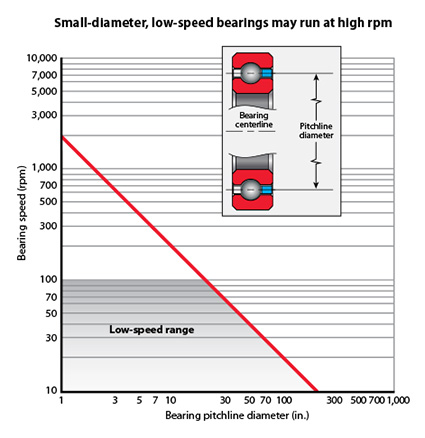
Figure 1 Typical low-speed bearingsA variety of bearings can be used in low-speed applications, but thin section bearings and slewing ring bearings are two of the most common. Thin section bearings (Fig. 2) are a great solution when design criteria combine stringent space constraints with requirements for light weight, high stiffness and accurate positioning. Industrial robots are a good example. Thin section bearings are typically available in radial contact, angular contact and four-point contact styles. 
Figure 2 Slewing ring bearings (Fig. 3) are typically large-diameter bearings that can simultaneously carry radial, thrust and moment loads while rotating a structure on a stationary base. Applications include cranes and gun mounts. These bearings are typically subject to heavy loading with slow, intermittent or partial rotation. They may have single-row or multiple-row ball and roller elements. 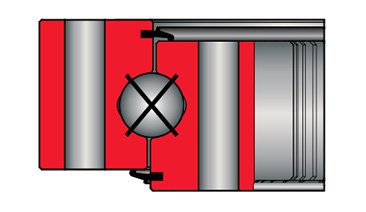
Figure 3 Biangular roller bearings (Fig. 4) are used in turntable applications that require greater positioning accuracy and higher stiffness than can be achieved with conventional ball bearings. While biangular roller bearings can support the same types of loads as four-point contact ball bearings, they are also less tolerant of mounting surface imperfections. Common applications for biangular roller bearings include indexing tables and radar antenna mounts. Four-point contact ball bearings and biangular roller bearings have "solid-race" configurations, with hardened and ground raceways that are integral with the supporting rings. When weight is a critical factor, you may want to consider bearings with wire races instead of solid races. 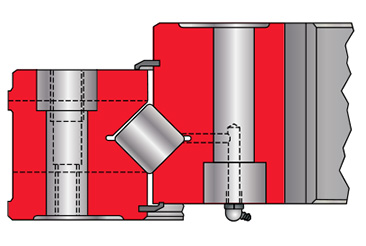
Figure 4 Wire race bearings (Fig. 5) are slewing ring bearings made with segmented, inserted "wire" raceways in separate supporting rings. They typically have ball or multiple-row roller elements, with supporting rings typically made of corrosion-resistant materials (like anodized aluminum) that further enhance weight savings. Speaking of materials, matching the bearing support ring material to that used in the mounting structure is a great way to increase thermal compatibility. 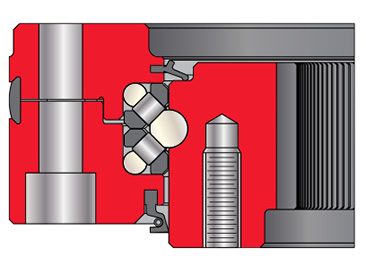
Figure 5 Performance requirementsAlthough the performance criteria for low-speed bearings are much the same as those for high-speed bearings, the same cannot be said of the performance requirements. Some of the most important are examined on the next two pages. Motion characteristics are a prime factor in determining if special attention must be given to lubricating the bearing surfaces, as they vary widely and lubrication generally becomes more difficult as speeds decrease. Some low-speed bearings operate with intermittent motion, some with oscillatory motion, and some with continuous motion (see Fig. 6). Further, those having intermittent motion may employ reversing rotation, constant direction rotation, or partial rotation with sudden stops. Bearings with sinusoidal reversing motion are examples of oscillating bearings. 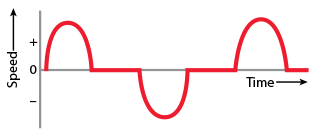
Intermittent motion—reversing rotation 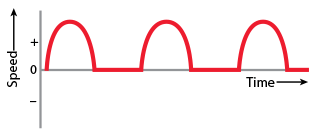
Intermittent motion—constant direction rotation 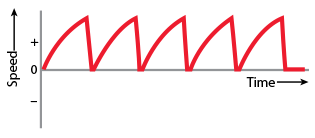
Intermittent motion—partial rotation with sudden stops 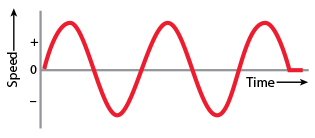
Oscillatory motion—sinusoidal reversing rotation 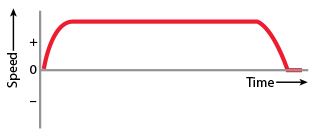
Continous motion—constant-speed rotation Figure 6 Stiffness is another critical factor for low-speed applications. Specified as a spring rate, this is what determines the deflection of a bearing under load. Many factors contribute to stiffness, including the configuration of the bearing, its diameter, preload, and how it will be supported. For maximum accuracy, stiffness limits should be specified in radial, axial or angular modes. Given this requirement, the bearing manufacturer can determine how it can best be achieved. Load capacity requirements include the radial loads, thrust loads and moment loads imposed on a bearing…during stationary conditions as well as dynamic conditions. Dynamic loads are often a less important consideration, as low-speed bearings are typically not subject to classic fatigue failures and tend to be designed more often for structural strength than for endurance. Resistance to vibration and shock affects long bearing life at low speeds, even though such loading is more often the result of external forces than the imbalance of rotating masses or non-precision components. (The slewing ring bearings that rotate tank turrets for example, must be designed to withstand the shock of the cannon firing.) Also, bearings subjected to vibration may need special lubrication provisions to prevent fretting corrosion/wear. Hostile environments mean harsh operating conditions for low-speed bearings, just as they do for high-speed bearings. Non-corrosive materials and/or special integral seals are commonly specified to resist corrosive chemicals, fumes, dirt, and other contaminants. And, since low-speed bearings often are used in equipment intended for use in deserts, the arctic—even outer space—special bearing materials and lubricants may be needed to assure performance in extreme temperatures and pressures. Torque characteristics include maximum starting torque, running frictional torque, and torque uniformity. Depending on the application, uniformity can be the most critical. For instance, when the bearing rotates very slowly, torque demand may vary widely within small increments of time due to sliding in the contact areas of the rolling elements. This demands special attention to bearing geometry, surface finishes, lubricant selection, and retainer design to minimize frictional torque variation. Such variation can be be hazardous in some applications…e.g., a bearing in an aircraft guidance system. Maintenance can be a challenge in low-speed bearing applications, especially if accessibility is limited. A spacecraft is one example; another is a telescope mounted at so high an altitude that it cannot be re-lubricated conveniently. For such applications, designers are advised to build into the bearing assembly an automatic provision, such as a lubricant reservoir or barrier film. Bearings that must be stored for long periods require special considerations. Some bearings use lubricants with high stability and long shelf life. Others use special preservative lubricants just for initial service, which are purged at installation and replaced with a different grease or oil for service. If you anticipate service conditions that might hinder regular maintenance or require long-term storage, you should advise the bearing supplier at the outset so that appropriate precautions may be taken. Service life of low-speed bearings is usually specified in time rather than revolutions. And if they are stored for long periods before being placed into service, as noted above, storage and shipping conditions must be taken into consideration. Neglected maintenance or accident damage (e.g., corrosion, water, contaminants) is a common cause of shortened service life. High reliability is almost always a key requirement, although the circumstances may differ. In aerospace applications, for example, low-speed bearings may require extremely high reliability even though their service life may be limited to a single flight. Another example is construction equipment, where high bearing reliability is necessary to minimize downtime between overhauls. One way to improve bearing reliability is to build in extra load capacity. Another is to plan more inspections and/or testing during the manufacturing process. A third is to introduce redundant components. Regardless of the approach, the best way to ensure reliability is to be sure the bearing supplier has accurate information about load and operating conditions. ConclusionWith so many factors involved, there is no fast track to specifying bearings for low-speed applications. Designers must take care to balance a wide range of performance criteria, some of which will be unfamiliar to those used to working in higher-speed applications. In such cases, the surest path to success is providing an experienced bearing manufacturer with a comprehensive list of your specific requirements. For more information, or to discuss a potential application with one of our expert product engineers, please contact Kaydon Bearings. Download this article
Bearing selection for low-speed applications |
|
|